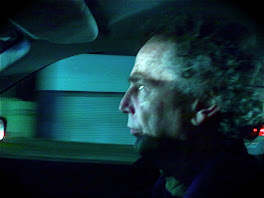All over the inner city of Sydney, and especially in the inner west, you find derelict cinemas or ghosts of cinemas. In Petersham there's one that was a skating rink before it closed down; in Haberfield there's another that is a supermarket, at least on the ground floor; in Enmore they saved theirs and it's now a classy venue for music, drama, comedy. Both next door Ashfield and Summer Hill had several cinemas but these are all now ghosts.
The Victoria Theatre was built on Lackey Street, #16-20, around 1911; it was first known as the Rugby Theatre but this name only lasted a year. Before that, as early as 1905, films were shown in the Methodist Church. The Victoria was an odd though not untypical structure, its arched façade, in the only surviving photograph, looks more like a bridge than a theatre, and the screen was initially at the street end rather than the other. This changed just after the war, when it was extensively remodelled. Victoria Pictures, which was always connected with Marrickville to the south and east and was owned by the (probably Lebanese) La Hood family in the 1920s, did not survive the advent of the talkies.
In 1929 building began on a new Summer Hill Theatre at #1 Sloane Street, on the other side of the railway lines from here. The architect was Emil Sodersten and his folly has been described as Spanish baroque frivolity derived from Hollywood; in some views it looks as much arabesque as baroque but it was certainly Spanish in inspiration, with a kind of galleon's poop looming at the front, with the statue of a naked goddess in an arched alcove within.
The Summer Hill Theatre, aka the Grosvenor Theatre, opened in October, 1930. It was one of the largest, if not the largest, cinema in NSW at the time, with seating for 2043 people. Most of the plaster work had been done locally, in Newtown: … extravagantly ornate & eclectic … soaring façade with protruding upper section intricately carved in filigreed plasters … Gothic arches & embellished columns … proscenium and side walls with false boxes, large carved urns and columns ... gargoyles and imitation leafwork … from a dome in the ceiling hung an enormous chandelier, removed ‘for safety’ during WW2 & never put back …
In contemporary photos, looking eastward from Ashfield towards the city, you see this bizarrre, extraordinary palace floating on the skyline. None of the photos I have seen are in colour but I assume it was ochre-coloured, or perhaps, like Petra, rose-pink. The interior was remodelled in 1939 (Gunga Din played at the Gala Opening), and during the 1950s, Cinemascope was installed.
But, like so many other suburban theatres, it did not survive the coming of television. The Grosvenor closed in 1959 (last features: Sheriff of Fractured Jaw and The Heart Within) then lurched, re-opening and closing, through the 1960s. Late in that decade it was used spasmodically to show foreign language films (Bergman? Fellini?) before going dark forever in 1969. It was demolished the next year and the site remained vacant for 15 years. Now, there is a low, oblong, glass box on that corner with, I guess, offices within.
Both of these cinemas are commemorated, if that's the word, in a rather crass mural on a wall in Lackey Street opposite where the Victoria used to be. What's poignant to me about this mural is that it wouldn't be there at all if the 19th century Department Store owned by C. Hodgson & Co., General Importers, that used to stand in that section of the street hadn't been demolished for a carpark, also in the 1970s. There's now an attempt at a park where it used to be, used mostly by the local drunks and druggies and residents of the various halfway houses in Summer Hill.
It's curious to reflect that both the Grosvenor and Hodgsons missed their moment by just a few years. The sensibility that would have valued and preserved them hadn't quite developed by the time they were knocked down but, only a few years later, their loss was felt with intense regret. Me, I try to rebuild them in my mind every time I pass and other times as well; there are days when I come out of the tunnel under the railway line and truly am surprised the Grosvenor is not there where I imagine it to be, a dream palace in which palatial dreams are entertained.
skip to main |
skip to sidebar
You are always at a nodal point where destiny forks ...
